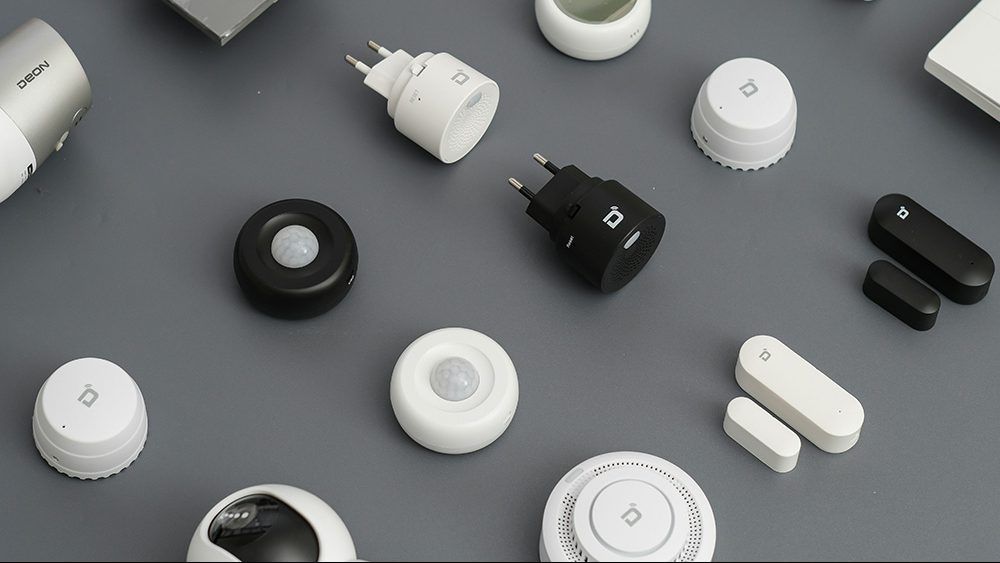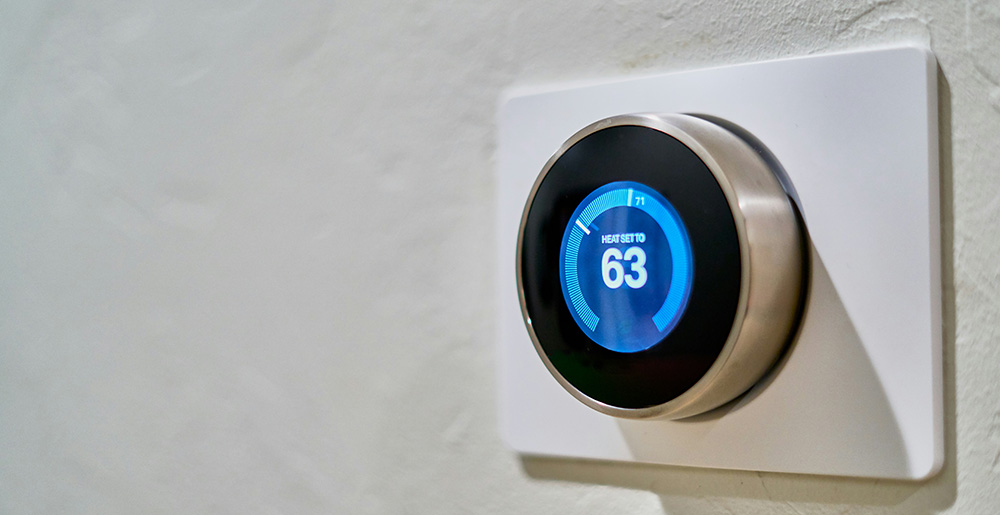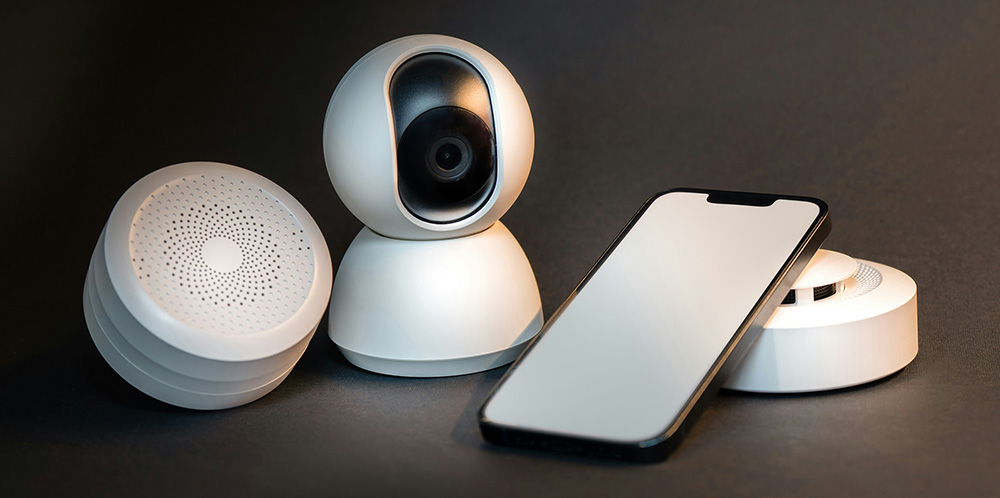Smart-home done right, transforms ordinary self-builds into intelligent, future-ready homes
Smart home systems in UK self-builds typically cost between £8,000 and £80,000, representing 3-15% of total build costs, with the right infrastructure planning during first fix being crucial for success. Professional systems like Loxone offer the best value for comprehensive automation at £15,000-35,000, while DIY options provide 80% of functionality at 20% of the cost. UK self-builders must navigate Part P regulations, choose between professional installation and DIY approaches, and critically, install proper cabling infrastructure during construction to avoid costly retrofitting later.

Pro systems = seamless automation but big investment
The three leading professional smart home systems each serve distinct market segments with varying price points and capabilities. Loxone emerges as the sweet spot for many UK self-builders, offering comprehensive automation from £15,000-35,000 for a typical 4-bedroom house. The Austrian company’s unified ecosystem provides advanced energy management, local processing without cloud dependency, and relatively DIY-friendly programming through Loxone Config software. Self build forum members report successful installations, though commissioning requires a certified Loxone Partner.
KNX represents the premium choice for luxury builds, with costs ranging from £25,000 to £80,000 for standard installations, potentially reaching £150,000 for high-end projects. This open standard protocol supports over 8,000 certified products from 500+ manufacturers, ensuring ultimate flexibility and future-proofing. The decentralized architecture means individual device failures won’t crash the entire system, making it ideal for complex, high-value properties. However, the complexity requires certified installers and ETS software expertise.
Control4 excels in audio-visual integration, making it the preferred choice for entertainment-focused homes. Typical installations cost £15,000-45,000, with the system’s strength lying in its mature ecosystem and extensive driver library for third-party devices. The significant limitation is complete dealer dependency – homeowners cannot make any programming changes without calling their installer, creating ongoing costs of £150-250 per hour for modifications.
Cabling during first-fix determines long-term system capabilities
The foundation of any smart home lies in its cabling infrastructure, with CAT6 cable emerging as the UK standard for residential installations. This specification supports 1Gbps throughout the property with 10Gbps capability up to 55 meters, meeting current needs while providing reasonable future-proofing at only 20% premium over CAT5e. UK installations must comply with BS 7671:2018 wiring regulations and BS 6701 fire performance standards.
First fix planning requires establishing a central plant room or technical cupboard, ideally positioned centrally to minimize cable runs. This space needs adequate ventilation, minimum 800mm working clearance, and capacity for a 19-inch equipment rack housing patch panels, managed switches, and control equipment. The golden rule is installing 50% more cable capacity than immediate requirements, as adding cables post-construction typically costs 10 times more than during first fix.
Cable routing follows a star topology, with dedicated runs from each outlet back to the central patch panel. Living areas require minimum 2x CAT6 per TV position plus additional runs for seating areas and ceiling-mounted wireless access points. Bedrooms need 2x CAT6 minimum, while home offices should have 4x ports. Conduit sizing follows BS 7671 calculations – 20mm conduit handles 4 cables, 25mm for 8 cables, and 32mm for 12 cables, with proper fire stopping at compartment boundaries.

DIY systems are great value if well thought through
Consumer-grade smart home systems provide remarkable functionality at 5-15% the cost of professional installations. A comprehensive DIY setup for a 4-bedroom house ranges from £800 for basic automation to £8,000 for whole-house control including lighting, heating, security, and entertainment. The key to success is choosing a primary ecosystem early – typically Amazon Alexa, Google Home, or Apple HomeKit based on existing device preferences.
UK-specific brands like Hive (British Gas) offer particular advantages for self-builders, with over 1 million UK installations proving reliability. The Hive ecosystem includes heating control from £159, smart bulbs at £15-25, and comprehensive energy monitoring designed specifically for UK electrical systems. Similarly, Tado specializes in intelligent heating with geofencing and weather adaptation, particularly suited to UK heating systems including complex multi-zone setups.
The primary limitations of DIY systems become apparent at scale. Performance degrades noticeably beyond 50 devices due to WiFi congestion, while the lack of unified control means juggling multiple apps. Cloud dependencies create vulnerability to internet outages, and the typical 3-5 year product lifecycle means planning for obsolescence. However, for self-builders comfortable with technology and phased implementation, DIY systems offer exceptional value and flexibility.
UK regulations mandate professional instal for key components
Part P of the Building Regulations creates clear boundaries between permitted DIY work and tasks requiring certified installers. All new circuits, consumer unit modifications, and work in special locations require either a Part P registered electrician or building control notification. Failure to comply constitutes a criminal offense with fines up to £5,000, and councils can force removal of non-compliant work.
Professional installers must hold NICEIC, NAPIT, or ECA registration for electrical work, with additional certifications required for smart home systems. KNX installers need Partner certification following extensive training, while Loxone and Control4 maintain their own partner programs. CEDIA membership indicates specialized smart home expertise, with certified installers required to demonstrate ongoing professional development.
Finding qualified installers requires careful verification through official directories. NICEIC covers approximately 38,000 certified businesses searchable through their website, while CEDIA UK maintains a member directory of smart home specialists. Regional costs vary significantly – London and Southeast installers charge 20-30% above the £45-80 hourly national average, while Northern regions typically cost 10-20% less. Always verify credentials independently and ensure installers carry minimum £2 million public liability insurance.
Real costs and pitfalls from UK self-builder experiences
Self-build forums tell a common story, that smart home systems typically consume 5% of project budgets for basic automation, rising to 15% when including access control, multiroom audio, and automated blinds. The most expensive mistake is poor timing – attempting to add smart home systems after first fix completion increases costs by 300-500% due to retrofitting requirements.
Common planning failures include inadequate network infrastructure, with many self-builders discovering WiFi dead zones only after moving in. Mixing incompatible brands creates integration nightmares, while underestimating power requirements leads to overloaded circuits. UK-specific challenges include combination boiler integration complexities and Part P compliance issues when mixing DIY and professional installation.
Successful implementations share common patterns: early specialist involvement during design phase, phased implementation over 12-18 months post-completion, and focusing on essential systems first. Energy savings of 20-25% on heating costs help justify investments, while professional-grade systems can add significant property value. Long-term satisfaction correlates strongly with choosing single-ecosystem approaches rather than mixing multiple brands.
Future-proofing: balance current needs with tomorrow’s technology and aspirations
Installing robust infrastructure during construction provides the foundation for future expansion without major disruption. Running 50mm conduits with draw strings between floors and to strategic locations enables cable additions for technologies not yet invented. Key routes include plant room to loft space, inter-floor connections, and external runs for future outbuildings or EV charging points.
Technology evolution planning must consider emerging standards while avoiding over-specification. CAT6a installation in high-bandwidth areas like home offices provides 10Gbps capability, while fiber optic backbones between floors offer virtually unlimited future capacity. Power over Ethernet infrastructure should support PoE++ (90W per port) to accommodate future high-power devices like displays and advanced sensors.
The infrastructure should support inevitable IoT device proliferation, with wireless access point provisions for one unit per 50-75 square meters ensuring adequate coverage. Edge computing nodes may become necessary as smart homes generate increasing data volumes, while local server infrastructure reduces cloud dependencies. Planning for these possibilities during construction costs minimal amounts compared to retrofitting, making generous infrastructure provisioning a wise investment for 20+ year building lifespans.

So what’s the right of smart home and automation tech for you?
In truth, it will come down to your budget and how important these services are to you. Smart home planning for UK self-builds requires balancing ambition with practicality while ensuring robust infrastructure foundations. Success depends on early planning integration, appropriate technology selection based on budget and expertise, and critically, installing comprehensive cabling infrastructure during first fix. Whether choosing professional systems like Loxone for comprehensive automation or building gradually with consumer-grade devices, the key is creating flexible infrastructure that accommodates both current needs and future possibilities. With proper planning, UK self-builders can create intelligent homes that enhance daily life while potentially adding property value.
The biggest tip is this – if your budget doesn’t match your ambition, focus on the infrastructure that is future-proof (build in the best cabling etc during your build), so you can build on that as funds allow in the future.
